Your Guide to IRLZ44N Power MOSFET
2024-11-16
2101
Catalog
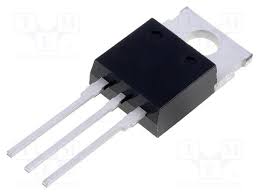
IRLZ44N Pin Configuration

CAD Model of IRLZ44N

Overview of the IRLZ44N
The IRLZ44N MOSFET possesses a remarkably low gate threshold voltage of 5V, making it easily triggerable by most microcontrollers. This simplifies the circuit design process by removing the need for additional driver circuits. For those diving into power electronics, this feature provides flexibility, enabling us to design with a sense of adaptability and grace.
IRLZ44N Manufacturer Overview
Infineon Technologies, an entity with roots tracing back to Siemens Semiconductors, stands as a beacon of creativity in microelectronics. Their rich product range includes components like the logic-level IRLZ44N, which enhances electronic systems' performance in diverse applications.
Attributes of the IRLZ44N
• Lanar Cell Structure for Wide Safe Operating Area (SOA): The device features a planar cell structure specifically designed to provide a wide Safe Operating Area, ensuring stable and reliable operation even under high-stress conditions, thereby enhancing overall performance and longevity.
• Optimized for Broadest Availability from Distribution Partners: This product is engineered to maximize availability through a wide network of distribution partners, ensuring that it can be easily sourced and integrated into various applications across different industries.
• Product Qualification According to JEDEC Standards: The device is fully qualified to meet JEDEC (Joint Electron Device Engineering Council) standards, which are internationally recognized for ensuring quality and reliability in electronic components.
• Silicon Optimized for Applications Switching Below 100kHz: The silicon used in this device is optimized for low-frequency applications with switching speeds below 100kHz, making it ideal for applications that require stable performance in lower switching frequency ranges.
• Industry-Standard Through-Hole Power Package: The device comes in an industry-standard through-hole power package, which facilitates easy integration and mounting on PCBs (Printed Circuit Boards) and provides efficient heat dissipation.
• High-Current Rating: This component is rated for high current, making it suitable for demanding applications that require reliable performance under high-current conditions.
Advantages of IRLZ44N
Robustness and Durability
Known for its remarkable toughness, the IRLZ44N MOSFET thrives in challenging environments, making it perfect for demanding applications. This trait results in a prolonged operational life amid harsh conditions. It often becomes the go-to choice for us in automotive and industrial sectors due to its dependable performance, especially when equipment longevity demands attention.
Accessibility Through Distribution Channels
A broad network of distributors ensures the IRLZ44N is readily accessible, facilitating an uninterrupted procurement process. The ease of availability is cherished by manufacturers as it maintains continuous production flow. In industries where rapid technological advancements are constant, quick access to such reliable components offers a distinct competitive edge, mitigating downtime and maintaining smooth operations.
High Qualification Standards
The IRLZ44N boasts high qualification credentials, ensuring consistent quality and reliability. This makes it a preferred component for dependable performance for strict project specifications. The rigorous pre-market testing enhances its reputation for reliability, comforting us who demand trustworthy components for their work.
Exceptional Low-Frequency Performance
The IRLZ44N is known for its outstanding performance in low-frequency applications, a feature advantageous in power conversion and amplification tasks. Such efficiency and precision have proven highly beneficial, with us noting remarkable improvements in project outcomes, increased precision, and minimized energy loss when using components like the IRLZ44N possessing specialized performance traits.
Standard Pin-Out and High Current Support
Featuring a standard pin-out, the IRLZ44N simplifies replacements and integration processes within existing system designs. This ease of implementation and reduced maintenance complexity contribute to time savings during upgrades and repairs. Additionally, it supports high current flows, addressing substantial power delivery needs. Through this application, its design simplicity enhances system adaptability and resilience, offering flexibility and efficiency.
Application of the IRLZ44N
• High Voltage Linear Regulators: The IRLZ44N is suitable for high-voltage linear regulators, which are devices designed to provide a stable output voltage even when the input voltage is higher. These regulators are commonly used in applications where maintaining a precise, noise-free voltage is required, such as in sensitive analog circuits or high-fidelity audio equipment. The IRLZ44N's robust voltage handling capabilities make it ideal for these applications.
• Non-Resonant Switching Converters (Buck/Boost/Buck-Boost Topologies): The IRLZ44N can be used in non-resonant switching converters, which are typically used to step down (buck), step up (boost), or both step up and step down (buck-boost) voltages in a power supply. In these topologies, the IRLZ44N acts as a switching element, allowing efficient energy conversion with minimal heat generation, making it suitable for power supplies in industrial, automotive, and consumer electronics.
• Resonant Switching Converters (Half-Bridge or Full-Bridge Topologies): The IRLZ44N is also compatible with resonant switching converters, which operate at higher efficiency and lower electromagnetic interference (EMI) compared to non-resonant types. In half-bridge or full-bridge configurations, the IRLZ44N can switch at higher frequencies, reducing switching losses and improving overall efficiency in applications such as induction heating, LED lighting, and high-power inverters.
• Application as a High-Side Switch or Gate Driver in Resonant and Non-Resonant Topologies: The IRLZ44N can serve as a high-side switch in non-resonant topologies, controlling the flow of current through the main power path. Additionally, in resonant converters like the LLC (inductor-inductor-capacitor) topology, it can function as a gate driver, provided that the drain current and VDS (drain-source voltage) ratings are within safe operating limits. This versatility allows the IRLZ44N to be used in various power supply designs, ensuring reliable performance across different load conditions.
Substituting the IRLZ44N
• IRF1010E
• IRF1010N
• IRF1010Z
• IRF1018E
• IRF1405
• IRF1405Z
• IRF1407
• IRF1607
• IRF2805
• IRF2807
• IRF2807Z
• IRF2907Z
• IRF3007
• IRF3205
• IRF3205Z
• IRF3305
• IRF3710Z
IRLZ44N Circuit Overview
The primary advantage of the IRLZ44N, beyond its high temperature tolerance and robust VDS and drain current ratings, is its low gate voltage threshold. This low threshold allows an MCU's GPIO pin to drive the IRLZ44N well into its ON state. As shown in the transfer characteristics, logic levels from 5V families to LVCMOS can provide sufficient voltage to drive the IRLZ44N, resulting in minimal on-state resistance.

LED Control with a MOSFET
This project demonstrates a simple way to use a MOSFET to power an LED. While an Arduino can directly drive LEDs, a MOSFET or transistor is required when a single pin’s load exceeds 40mA or the combined load on all pins exceeds 200mA. For example, powering a 5V mechanical relay requires around 100mA, which is more than a single pin can provide, making a MOSFET required. For use with microcontroller output voltages, a logic-level MOSFET is required. These MOSFETs are typically identified by an "L" in their part number, such as the IRLZ44N or IRL540.
Logic-level MOSFETs like the IRLZ44N are ideal for Arduino projects, allowing high current switching at voltages above 5V. With proper heatsinking and temperature management, the IRLZ44N from International Rectifier can switch up to 47A at 55V. Be sure to check the datasheet for specific current limits, as these can vary across different IRLZ44N models. In the TO-220 package, the pin layout (from left to right) is Gate, Drain, and Source. To prevent accidental activation, a 10k pull-down resistor should be placed between the gate and source pins. Without this resistor, even slight electrostatic charges on the gate could turn the MOSFET on – a simple touch on the gate wire may be enough.
For the IRLZ44N to start conducting, the Gate Threshold Voltage (VGS) must be exceeded. For this MOSFET, VGS is approximately 2V. However, at this threshold, the MOSFET is only partially on and may carry just 1A. To determine the current it can switch at various gate voltages, refer to the charts in the MOSFET’s datasheet.

Technical Specifications
Infineon's IRLZ44NPBF presents a set of technical features, each contributing to a broad array of applications reliant on reliable electrical components. This MOSFET is crafted with considerable attention to detail, aligning with the expectations of contemporary electronic systems, and promises efficiency and durability. Below, we explore its primary features and their broader implications.
|
Type |
Parameter |
|
Factory Lead Time |
12 Weeks |
|
Mount |
Through Hole |
|
Mounting Type |
Through Hole |
|
Package / Case |
TO-220-3 |
|
Number of Pins |
3 |
|
Transistor Element Material |
SILICON |
|
Current - Continuous Drain (Id) @ 25℃ |
47A Tc |
|
Drive Voltage (Max Rds On, Min Rds On) |
4V 10V |
|
Number of Elements |
1 |
|
Power Dissipation (Max) |
3.8W Ta 110W Tc |
|
Turn Off Delay Time |
26 ns |
|
Operating Temperature |
-55°C~175°C TJ |
|
Packaging |
Tube |
|
Series |
HEXFET® |
|
Published |
1997 |
|
JESD-609 Code |
e3 |
|
Part Status |
Active |
|
Moisture Sensitivity Level (MSL) |
1 (Unlimited) |
|
Number of Terminations |
3 |
|
ECCN Code |
EAR99 |
|
Resistance |
22mOhm |
|
Terminal Finish |
Matte Tin (Sn) - with Nickel (Ni) barrier |
|
Additional Feature |
AVALANCHE RATED |
|
Voltage - Rated DC |
55V |
|
Current Rating |
47A |
|
Lead Pitch |
2.54mm |
|
Number of Channels |
1 |
|
Element Configuration |
Single |
|
Operating Mode |
ENHANCEMENT MODE |
|
Power Dissipation |
83W |
|
Case Connection |
DRAIN |
|
Turn On Delay Time |
11 ns |
|
FET Type |
N-Channel |
|
Transistor Application |
SWITCHING |
|
Rds On (Max) @ Id, Vgs |
22mΩ @ 25A, 10V |
|
Vgs(th) (Max) @ Id |
2V @ 250μA |
|
Input Capacitance (Ciss) (Max) @ Vds |
1700pF @ 25V |
|
Gate Charge (Qg) (Max) @ Vgs |
48nC @ 5V |
|
Rise Time |
84ns |
|
Vgs (Max) |
±16V |
|
Fall Time (Typ) |
15 ns |
|
Continuous Drain Current (ID) |
47A |
|
Threshold Voltage |
2V |
|
JEDEC-95 Code |
TO-220AB |
|
Gate to Source Voltage (Vgs) |
16V |
|
Drain to Source Breakdown Voltage |
55V |
|
Dual Supply Voltage |
55V |
|
Recovery Time |
120 ns |
|
Max Junction Temperature (Tj) |
175°C |
|
Nominal Vgs |
2 V |
|
Height |
19.8mm |
|
Length |
10.5156mm |
|
Width |
4.69mm |
|
REACH SVHC |
No SVHC |
|
Radiation Hardening |
No |
|
RoHS Status |
ROHS3 Compliant |
|
Lead Free |
Lead Free |
Alternative Options for IRLZ44NPBF
|
Parameter |
IRLZ44NPBF |
IRFZ46NPBF
|
IRFZ44NPBF
|
|
Manufacturer |
Infineon Technologies |
Infineon Technologies |
Infineon Technologies |
|
Mount |
Through Hole |
Through Hole |
Through Hole |
|
Package / Case |
TO-220-3 |
TO-220-3 |
TO-220-3 |
|
Continuous Drain Current |
47 A |
49 A |
53 A |
|
Current - Continuous Drain (Id) @ 25℃ |
47A (Tc) |
49A (Tc) |
53A (Tc) |
|
Threshold Voltage |
2 V |
2.1 V |
4 V |
|
Gate to Source Voltage (Vgs) |
16 V |
20 V |
20 V |
|
Power Dissipation |
83 W |
83 W |
88 W |
|
Power Dissipation - Max |
3.8W (Ta), 110W (Tc) |
94W (Tc) |
107W (Tc) |
Datasheet PDF
IRF1010EZ Datasheets
IRF1010EZ Details PDFIRF1010EZ PDF - DE.pdf
IRF1010EZ PDF - FR.pdf
IRF1010EZ PDF - ES.pdf
IRF1010EZ PDF - IT.pdf
IRF1010EZ PDF - KR.pdf
IRF1010Z Datasheets
IRF1010Z Details PDFIRF1010Z PDF - FR.pdf
IRF1010Z PDF - ES.pdf
IRF1010Z PDF - IT.pdf
IRF1010Z PDF - KR.pdf
IRF1010Z PDF - DE.pdf
IRF1405Z Datasheets
IRF1405Z Details PDFIRF1405Z PDF - DE.pdf
IRF1405Z PDF - FR.pdf
IRF1405Z PDF - ES.pdf
IRF1405Z PDF - IT.pdf
IRF1405Z PDF - KR.pdf
IRF1607 Datasheets
IRF1607 Details PDFIRF1607 PDF - DE.pdf
IRF2807Z Datasheets
IRF2807Z Details PDFIRF2807Z PDF - DE.pdf
IRF2807Z PDF - FR.pdf
IRF2807Z PDF - ES.pdf
IRF2807Z PDF - IT.pdf
IRF2807Z PDF - KR.pdf
IRF3205Z Datasheets
IRF3205Z Details PDFIRF3205Z PDF - DE.pdf
IRF3205Z PDF - FR.pdf
IRF3205Z PDF - ES.pdf
IRF3205Z PDF - IT.pdf
IRF3205Z PDF - KR.pdf
IRF3305 Datasheets
IRF3305.pdfIRF3305 Details PDF
IRF3305 PDF - DE.pdf
IRFZ46NPBF Datasheets
IRFZ46NPBF.pdfIRFZ46NPBF Details PDF
IRFZ46NPBF PDF - DE.pdf
IRFZ46NPBF PDF - FR.pdf
IRFZ46NPBF PDF - ES.pdf
IRFZ46NPBF PDF - IT.pdf
IRFZ46NPBF PDF - KR.pdf
IRFZ44NPBF Datasheets
IRFZ44NPBF Details PDFIRFZ44NPBF PDF - DE.pdf
IRFZ44NPBF PDF - FR.pdf
IRFZ44NPBF PDF - ES.pdf
IRFZ44NPBF PDF - IT.pdf
IRFZ44NPBF PDF - KR.pdf
 ABOUT US
Customer satisfaction every time. Mutual trust and common interests.
ABOUT US
Customer satisfaction every time. Mutual trust and common interests.
function test. The highest cost-effective products and the best service is our eternal commitment.
Hot Article
- Are CR2032 and CR2016 Interchangeable
- MOSFET: Definition, Working Principle and Selection
- Relay Installation and Testing, Interpretation of Relay Wiring Diagrams
- CR2016 vs. CR2032 What’s the difference
- NPN vs. PNP: What's the Difference?
- esp32 vs stm32: which microcontroller is better for you?
- LM358 Dual Operational Amplifier Comprehensive Guide: Pinouts, Circuit Diagrams, Equivalents, Useful Examples
- CR2032 VS DL2032 VS CR2025 Comparison Guide
- Understanding the Differences ESP32 and ESP32-S3 Technical and Performance Analysis
- Detailed Analysis of RC Series Circuit
 74HC02 Quad 2-Input NOR Gate Guide
74HC02 Quad 2-Input NOR Gate Guide
2024-11-16
 Comprehensive Guide into KA4558 Dual Operational Amplifier
Comprehensive Guide into KA4558 Dual Operational Amplifier
2024-11-16
Frequently Asked Questions [FAQ]
1. How do I Use the IRLZ44N?
To use a MOSFET as a switch, the gate voltage (VGS) must be higher than the source voltage. When the gate is connected to the source (VGS = 0), the MOSFET is turned off. For example, the IRFZ44N, a standard MOSFET, requires a gate voltage between 10V and 20V to turn on fully.
2. What is the IRFZ44N?
The IRFZ44N is an N-channel MOSFET capable of handling a high drain current of 49A and featuring a low RDS(on) value of 17.5 mΩ. It has a threshold voltage of 4V, at which it starts conducting. This makes it suitable for use with microcontrollers operating at 5V, though additional circuitry may be required for full switching.
3. What is the Difference Between IRLZ44N and IRFZ44N MOSFETs?
The IRLZ44N and IRFZ44N MOSFETs differ in their gate threshold voltages and intended use cases.
• IRLZ44N: A logic-level MOSFET with a low gate threshold voltage (typically 5V), allowing it to be fully switched on directly by a 5V microcontroller, such as an Arduino, without the need for a gate driver circuit.
• IRFZ44N: A standard MOSFET that requires a gate voltage of 10V to 20V to fully turn on. While it can be partially driven by a 5V signal, this results in limited drain current, making a gate driver circuit for optimal performance.
4. What is the Gate Threshold Voltage?
The gate threshold voltage (VGS) is the minimum gate-to-source voltage at which the MOSFET begins to conduct a small, specified amount of drain current (ID). This is typically measured with VGS = VDS. On a curve tracer, the drain supply provides VDS, and the gate is shorted to the drain using patch cords, ensuring VGS = VDS during testing.
Hot Part Number
 GCM188R72A153KA37D
GCM188R72A153KA37D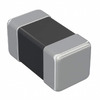 UMK105CG391JVHF
UMK105CG391JVHF GRM1885C1H240GA01D
GRM1885C1H240GA01D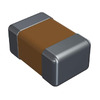 08051A270JAT4A
08051A270JAT4A 04023A100MAT2A
04023A100MAT2A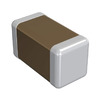 GQM1555C2D2R3BB01D
GQM1555C2D2R3BB01D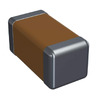 1206AC472KAZ9A
1206AC472KAZ9A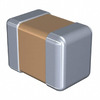 C2012SL1A104J
C2012SL1A104J TACL155M006XTA
TACL155M006XTA F910J477KNC
F910J477KNC
- PIC16F873A-I/SP
- IRS2153DSTRPBF
- LT1374HVCS8#PBF
- S-8330A24FS-T2-G
- VI-B7L-MW
- PIC16F946-I/PT
- R5F61664RN50FPV
- MAX13172ECAI+T
- DS1E-S-DC12V
- RT0805BRE07475KL
- V300C15T150BL2
- BSM50GB160D
- BQ24123RHLR
- AD8572ARUZ
- T491D476M016AT7454
- M27W512-100N6
- T491C106M016ZT7027
- ADR361AUJZ-REEL7
- TPS71701QDRVRQ1
- T491D475K050AT4860
- CM1423-01CP
- GS3800-808-001AAB1
- MAX1718EEI-T
- MAX4386EEUD
- MK10DN512V10
- MT49H32M9FM-33
- PC28F256P30BF
- SE-SM4310-S01
- ST16C450CJ
- ST62P09CMI/REX
- ST72P264H1NYZTRE
- STM32F100RBH6TR
- UPD703030BGF-A21-3BA
- XC2V4000-FF1152C
- GVS99372P
- SE857MH-NT
- TPSE107M016R
- K5E1G13ACA-D075
- DDX-8000